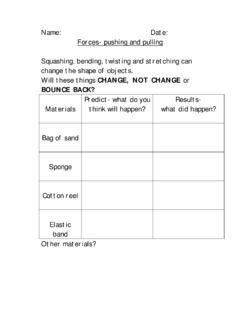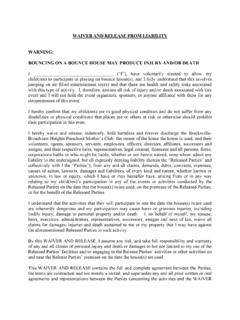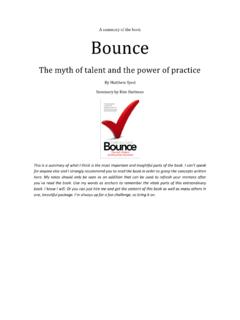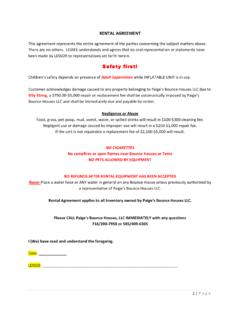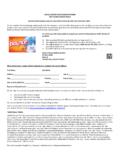Transcription of S CARDIOPULMONARY IMAGING ‘‘Septal Bounce’’ - bsctr.bg
1 Septal bounce Christopher M. Walker, MD, Jonathan H. Chung, MD, and Gautham P. Reddy, MDAPPEARANCEA ppearance:The septal bounce is a paradoxical bouncing motion of the interventricular septum initially directed towards and then away from the leftventricle during early diastole (Fig. 1 and see Video, Supplemental Digital Content 1, which demonstrates characteristic septal bounce on cine SSFP4-chamber images, ). It is accentuated by deep inspiration and reverses with exhalation. Transient leftward shift oftheinterventricular septum can also be seen with the Mueller maneuver ( forced inspiration against a closed glottis).1 The septal bounce may at timesoccur in right ventricular dysfunction related to massive pulmonary embolism or other causes of pulmonary arterial :The septal bounce is typically seen in constrictive pericarditis and cardiac tamponade when there is an increase in ventricularinterdependence.
2 Ventricular interdependence occurs in conditions where an increase in volume of one ventricle causes a decreased volume in theopposite ventricle. This phenomenon is caused by reduced ventricular compliance due to a fixed pericardial early diastole there israpid inflow of blood into the ventricles which causes a marked change in ventricular right ventricular filling begins slightlybefore left ventricular filling, the change in pressure equates to paradoxical leftward motion of the interventricular septum. The septal bounce isaccentuated during inspiration when venous return to the right ventricle increases. This effect is reversed during exhalation when less blood isreturned to the right :The septal bounce is most commonly associated with constrictive pericarditis but can also be seen in cardiac tamponade.
3 In the broadestsense, a septal bounce -like motion may also be seen in the setting of elevated right heart pressures, right ventricular pacing, and left bundle sign is most useful in differentiating constrictive pericarditis from restrictive cardiomyopathy in order to guide appropriate therapydecisions. Constrictive pericarditis is treated with pericardiectomy, whereas medical treatment is used in restrictive sign ishighly specific and relatively sensitive in the setting of suspected constrictive pericarditis. In two cardiac MRI studies involving 86 patients withconstrictive/restrictive physiology, the sign had a sensitivity of 81% to 96% and a specificity of 100% for the diagnosis of constrictive ,7 Importantly, the septal bounce was not present in the asymptomatic control group of 37 ,7 There are reports in the echocardiographyliterature of the septal bounce being seen in normal patients and in patients with restrictive ,8 Therefore, this sign should be used inconjunction with other IMAGING signs ( pericardial thickeningZ4 mm, dilated right atrium, and dilated inferior vena cava)
4 In order to correctlydiagnose constrictive Brinker JA, Weiss JL, Lappe DL, et al. Leftward septal displacement during right ventricular loading in 1980;61:626 Oliver TB, Reid JH, Murchison JT. Interventricular septal shift due to massive pulmonary embolism shown by CT pulmonary angiography: anold sign 1998;53:1092 1094; discussion 1088 Giorgi B, Mollet NR, Dymarkowski S, et al. Clinically suspected constrictive pericarditis: MR IMAGING assessment of ventricular septal motionand configuration in patients and healthy 2003;228:417 Candell-Riera J, Garc a del Castillo H, Permanyer-Miralda G, et al. Echocardiographic features of the interventricular septum in chronicconstrictive 1978;57:1154 Restrepo CS, Lemos DF, Lemos JA, et al.
5 IMAGING findings in cardiac tamponade with emphasis on 2007;27:1595 Hancock EW. Differential diagnosis of restrictive cardiomyopathy and constrictive 2001;86:343 Cheng H, Zhao S, Jiang S, et al. The relative atrial volume ratio and late gadolinium enhancement provide additive information to differentiateconstrictive pericarditis from restrictive Cardiovasc Magn Reson. 2011;13 Himelman RB, Lee E, Schiller NB. Septal bounce , vena cava plethora, and pericardial adhesion: informative two-dimensional echocardiographicsigns in the diagnosis of pericardial Am Soc Echocardiogr. 1988;1:333 bounce in a 31-year-old man with constrictive SSFP 4-chamber views during early and late diastole (A and B) initiallyshow leftward deviation of the septum followed by a bounce back towards theright ventricle in late diastole (black arrows).
6 Note thickening of the pericardiumwith a small pericardial effusion (white arrows) and a partially visualized leftpleural bounceParadoxical bouncing motion ofthe interventricular septumoccurring in early diastoleDifferential diagnosisConstrictive pericarditisPericardial tamponadePulmonary hypertensionLeft bundle branch blockRight ventricular pacingNo financial disclosures or grant authors declare no conflicts of Digital Content is available for this article. Direct URL citations appear in the printed text and are provided in the HTML and PDFversions of this article on the journal s Website, by Lippincott Williams & WilkinsSIGNS INCARDIOPULMONARYIMAGINGJ Thorac IMAGING Volume 27, Number 1, January |W1

